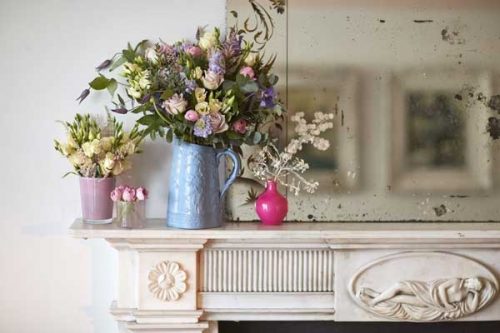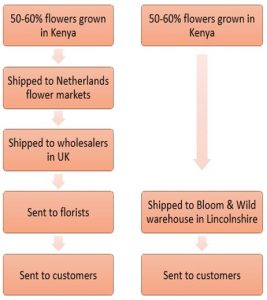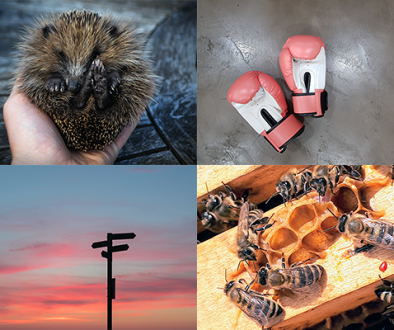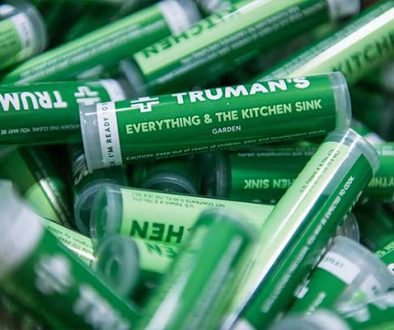Designing better business models: Bloom & Wild

As part of our Innovative Companies series Emerson Nash is putting various companies under the microscope, examining how they challenge and change the norm to innovate and become successful through analysis of their products, services and business models.
We attended an excellent presentation by Aron Gelbard of Bloom & Wild, prompting us to showcase their business journey and innovation.
Sending and receiving flowers should bring a moment of joy for both the sender and the recipient
Aron Gelbard, Co-founder Bloom & Wild, May 2019
The gift of flowers can be traced back to ancient Athens yet even 6 years ago the act of sending flowers was, more often than not, not a joyous occasion and it was due to this realisation, for Aron Gelbard and the co-founders of Bloom & Wild, that the idea for their business was born.
Bloom & Wild is one of the fastest growing businesses in the UK and has transformed the online flower gifting market, pioneering the concept of ‘letterbox flowers’. Its offering allows customers the ability to gift beautiful, high quality, long-lasting, fresh flowers in a convenient slim box that fits through the receiver’s letterbox.
Let’s take it back to the beginning:
What inspired Bloom & Wild? And what were the choices they made that contributed to their success to date?
The Question:
Speaking in May 2019, Aron Gelbard admits that they have always had an obsession with the customer and their experience. It has been the same since day one and the first question that always needs to be asked is;
What is the job that the customer wants to get done?
In this case, the customer wants to buy flowers as a gift for someone and they want to feel good about it at the same time.
Then, more importantly, they asked what the customer liked and did not like about current propositions in the market place, what frustrates them and what could delight them further.
For example, some of the problems people were encountering were flowers not arriving on time, poor quality on arrival or not lasting very long, or simply just not knowing what the recipient would actually receive. Plus, it was always difficult to know when the recipient would be in to receive the flowers without spoiling the surprise.
Bloom & Wild also looked at what people really wanted out of the experience: reassurance, ease (surprisingly very few online ordering options worked properly on mobile phones at the time) and feelings of joy.
The Answer:
Bloom & Wild saw that the market had 2 main types of operators: florists with a small amount of online business; or supermarkets who had an online platform but without specialty flowers. They did not want to be like either.
Instead of starting at the existing solutions, Bloom & Wild looked elsewhere for inspiration, for new ways to answer the needs of the customer.
Among other newly emerging ‘letter box businesses’ Gelhard took inspiration from a fellow Oxford alumnus, Anthony Fletcher, who had joined the snacking company Graze. He was so impressed with the way that ‘so much innovation had gone into something so everyday as snacking’ that he was inspired to think differently and answer the customers’ needs in better ways.
The letter box flowers idea was born and it is what Bloom & Wild are currently best known for and makes up 90% of their business. The box packaging means that the flowers can be delivered via Royal Mail’s tracked service straight through the door with the other post. Within the box, the flowers are delivered in protective packaging with the majority still in bud to allow for longevity and increased quality. The website offers the customer a seasonal curated range of bouquets to prevent the customer being overwhelmed with choice and to minimise wastage.
Bloom & Wild now had a proposition that solved some of the key problems that their research had highlighted and, more importantly, solved these customer problems better than their competition did:
| Issue customer encountered | Answer |
|---|---|
| Recipient having to be in at time of delivery | Packaging that fits through the letter box |
| Flowers not turning up when expected | Tracking service through Royal Mail or DPD |
| Poor quality or damaged flowers | Protective packaging |
| Flowers not lasting long enough | Flowers arriving in bud |
| Not knowing what the recipient will actually get | Clear pictures and descriptions on website |
| Poor mobile phone experience | Dedicated app and mobile phone compatible website |
What next?
Once Bloom & Wild had a set of products that satisfied the customer’s needs, they had to design a business model around it to
- be able to sell them; and
- to make money from them so that the business could succeed and continue
Apart from the product/ service and the customer themselves, there are other elements of a business model that need to be considered: distribution, partnerships, ways of creating income and ways of controlling costs and maximising resources.
Gehard said that he and the co-founders quickly realised that Bloom & Wild would have to become a tech company more than a florist if they were to really fulfil their ambition. Whilst originally tech capability and app developers were outsourced and were key partners of the business, after the second round of funding they were brought in-house to be a key resource.
From the front-end perspective, this was key to be able to deliver the products and services to the customers in this direct-to-consumer model. Research had told them that customers were frustrated by the experience of sending flowers, especially from a mobile smartphone, so they made it their top priority to get it right and dedicate resource in this area. Whilst a considerable expense, this was the way that a greater number of customers would be achieved and repeat purchases facilitated whilst outperforming their competitors.
Another key change that was made to the business model was in the supply chain of their flowers. When Bloom & Wild first started out, they followed the industry standard route which consisted of 5 steps before reaching the consumer (shown on the left hand side in the diagram below).
Originally they tried to make the current process more efficient through better buying from the Dutch markets.
However, this did not get the results they needed so they tore up the rule book and designed a new process (right hand side of diagram below).
This new way went against industry norms but allowed them to have greater control over costs and stock, access to fresher produce, and the ability to implement an ethical trade relationship with the Kenyan farmers themselves. This enabled the customer to have fresher and higher quality flowers and so improved the proposition in an area that mattered to customers whilst making internal efficiencies and cost savings at the same time.
Traditional process v Bloom & Wild

And then?
What has continued to drive Bloom & Wild’s success is their passion for innovation, for continuously looking for ways to improve their business model and for ways to delight their customers with their product offering.
They have found more customer occasions and jobs to be done to expand their business, always focusing on finding solutions to the difficulties and challenges that customers face.
They have developed a corporate offering and a subscription service so that they can now bring joy through flowers regularly, as a treat for self, someone else or in the workplace.
In terms of product propositions, they have found that their letterbox proposition works so well that they have innovated within those constraints, and now do gift packages, seasonal and occasion driven offerings and have even managed to fit mini Christmas trees, with lights and baubles included, in their boxes!
I am looking forward to see what else they manage to fit in the letterbox box and to see how they continue to grow and develop through innovating and adapting their business model to stay ahead of their competition.






